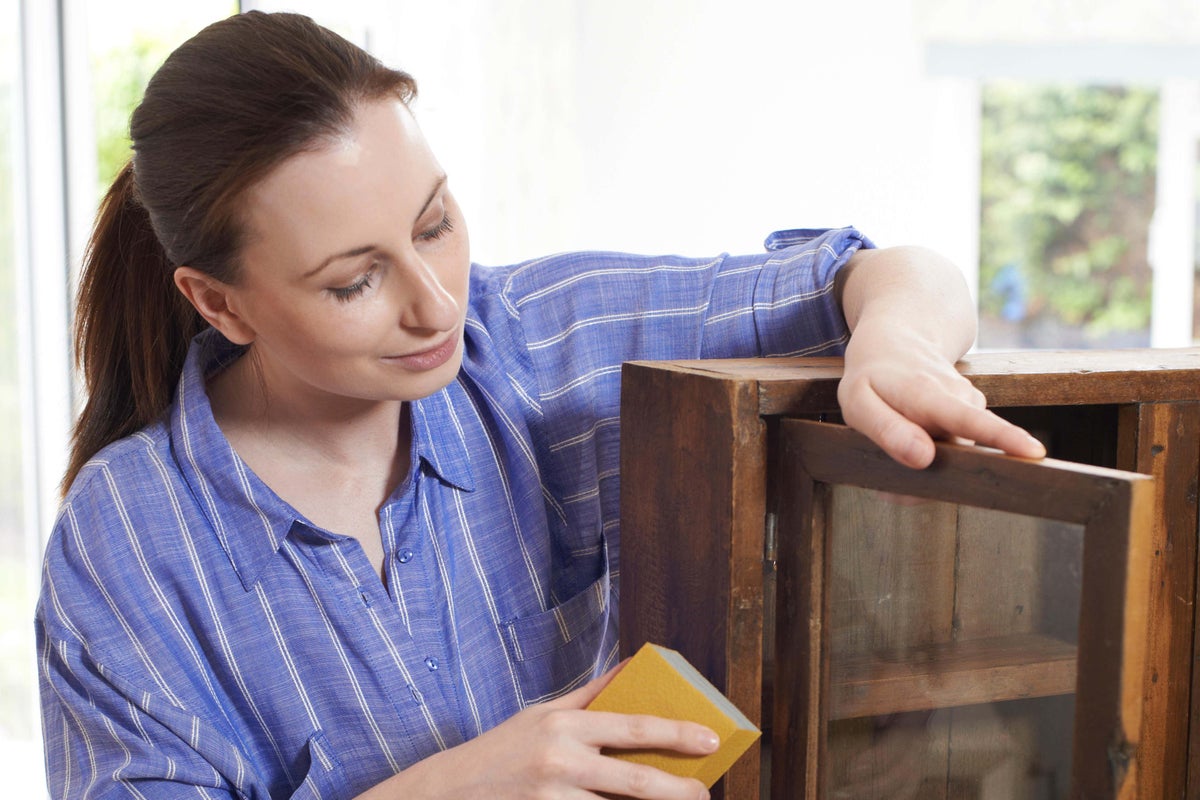How to upcycle furniture like a pro

Most people would love their home to be full of unique furniture that isn’t just a replica of next-door’s.
But although many homeowners’ budgets don’t stretch to filling their home with expensive bespoke furniture, it’s still possible to own quirky, one-off items by upcycling furniture yourself.
And before you dismiss the idea as only being for creative types, rest assured you don’t need any special skills to do this – just a little imagination and the willingness to give it a go.
“There seems to be a bit of a craze for upcycled furniture – it’s an eco-friendly alternative to buying new and it’s the perfect way to give your home a uniquely personal look,” explains Odette Gibson, founder of Daisy’s Emporium Interior Design, which, among other services, supplies restored hand-painted furniture.
“No special skills are needed and there are no rights and wrongs with upcycling – it’s all about what you want for your home, whatever colour or style that may be. I’d definitely recommend giving upcycling a go – it’s the perfect way to keep old furniture out of landfill and create something memorable for your home.”
And interior designer and creative director at Blocc Interiors Karl Openshaw, who has just collaborated with housing developers Barratt London on a new upcycling campaign, adds: “There’s a real shift in how people furnish their homes. We’re seeing growing interest in pieces with character, creativity, and individual charm.
“Repurposing isn’t just sustainable, it challenges the idea that furniture has to be one thing, used one way, forever. The most exciting upcycles I’ve seen completely ignore the original function – a vintage door becomes a headboard, drawers become a kitchen island.
“It’s furniture that doubles as sculpture.”
But how do you go about upcycling furniture? The experts explain…
What furniture can be upcycled?
Gibson says any type of furniture can be upcycled, but Victorian or Edwardian ‘brown’ furniture looks particularly good when it’s restored. “It’s solidly made and easily given a new lease of life,” she says.
“With upcycling, the only thing that stops you is your imagination, so look at auctions, junk shops and house clearances. You might be surprised at the places where you can find good-quality furniture at a fraction of the price of new items. I’d recommend looking for either mahogany or oak furniture, as these upcycled items look substantial and exude quality when finished.”
Imperfection is perfectRather than looking for the perfect piece to upcycle, Openshaw recommends hunting for the one with the most promise. “The best pieces to repurpose aren’t the most beautiful, they’re the ones that make you pause,” he explains
“I look for pieces with a bit of wear, a strange silhouette, or a forgotten function because they offer the most creative potential. That odd-legged stool at a car boot sale could have more potential than anything in a high street store. A scratched table isn’t damaged – it’s an invitation to reimagine.”
Think about where your item will livePlan where your upcycled item will be used, Gibson advises. “Think about where the piece of furniture’s going to live, what colours are needed to help it fit in that specific room, how will it be used? Does the room have a theme you’d like to follow?” she asks.
“You also need to consider whether you already have the item, or if you need to scour the charity shops and places like Facebook Marketplace. Could you get creative and perhaps repurpose an old linen press cupboard into a beautifully colourful wardrobe for your or your child’s bedroom?”
Give furniture a new purposeUpcycling doesn’t mean the item has to be used for its original purpose, and Gibson stresses: “If you love it, have space for it, and you can find a use for it – upcycle it!”
How do you prepare an item for upcycling?
Gibson says the basics for upcycling are the same, regardless of the style of the piece.
She says you firstly need to remove any handles, even if you intend to re-use them, as this makes sanding and painting easier.
Then sand the entire item in order to give subsequent paint or varnish a key, and also to help remove any wax. “It’s important to do this properly as you want your paint to adhere to the surface and not peel or flake in a few months,” she stresses.
“It’s also important to get into every corner so the paint adheres evenly to every surface and every part of the furniture. Sanding is essential to ensure a good finish.”
She recommends wearing a good face mask, as it’s important to protect your lungs from inhaling old paints and dust.
When the piece has been sanded, wipe it with methylated spirits on a soft cloth. Gibson recommends avoiding white spirit because oil in it could leave a residue on newly-sanded furniture.
Be bold with colour
Finally, paint the item inside and out with a good-quality furniture paint, not forgetting to paint the back and legs.
“We’re seeing a real appetite for bold, unapologetic colour – not just as accents, but as anchors,” says Openshaw. “Think of it as emotional design that makes you feel something.”
Read the paint instructions carefully to see whether a base coat or primer is needed, and Gibson advises: “You’ll almost certainly need to give the item a second coat of paint to ensure even coverage and good depth of colour.”
Once the item is fully dry, you can add additional decoration.
Add new handlesNew handles can make all the difference to an upcycled item, says Gibson. “There are some lovely, quirky handles around,” she says. “There will be the perfect handle to give your beautiful upcycled item an extra-special touch of personalisation.”
Add special touches
Several special touches are commonly used in upcycling, such as decoupage, where various different pictures – taken from magazines etc, or by using specialist decoupage tissue bought from craft suppliers – are attached to the furniture and varnished over a number of times.
“This not only gives a protective surface, it also gives the illusion that the pictures are all part of the item – as though they were carefully painted on way back when,” says Gibson.
She points out that if you have a theme, such as a child’s bedroom, decoupage works really well – for example, furniture in a little girl’s bedroom could be upcycled, painted and then decoupaged with fairies and unicorns.
You can also give upcycled furniture a light spritz of gold paint, standing well back with a tin of spray paint and lightly spraying to give a dusting of gold over the paint and decoupage. Remember to wear a mask, says Gibson, and put a dust sheet over anything nearby.
Don’t be afraid to experimentOpenshaw stresses: “I always tell beginners to focus on one element at a time. Change the colour, add new hardware, or introduce texture.
“Don’t be afraid to experiment. The worst that can happen is you learn something new – and happy accidents often lead to the most interesting results. When you fill your home with repurposed pieces, you create a space that feels truly, unmistakably yours.”
[title_words_as_hashtags




